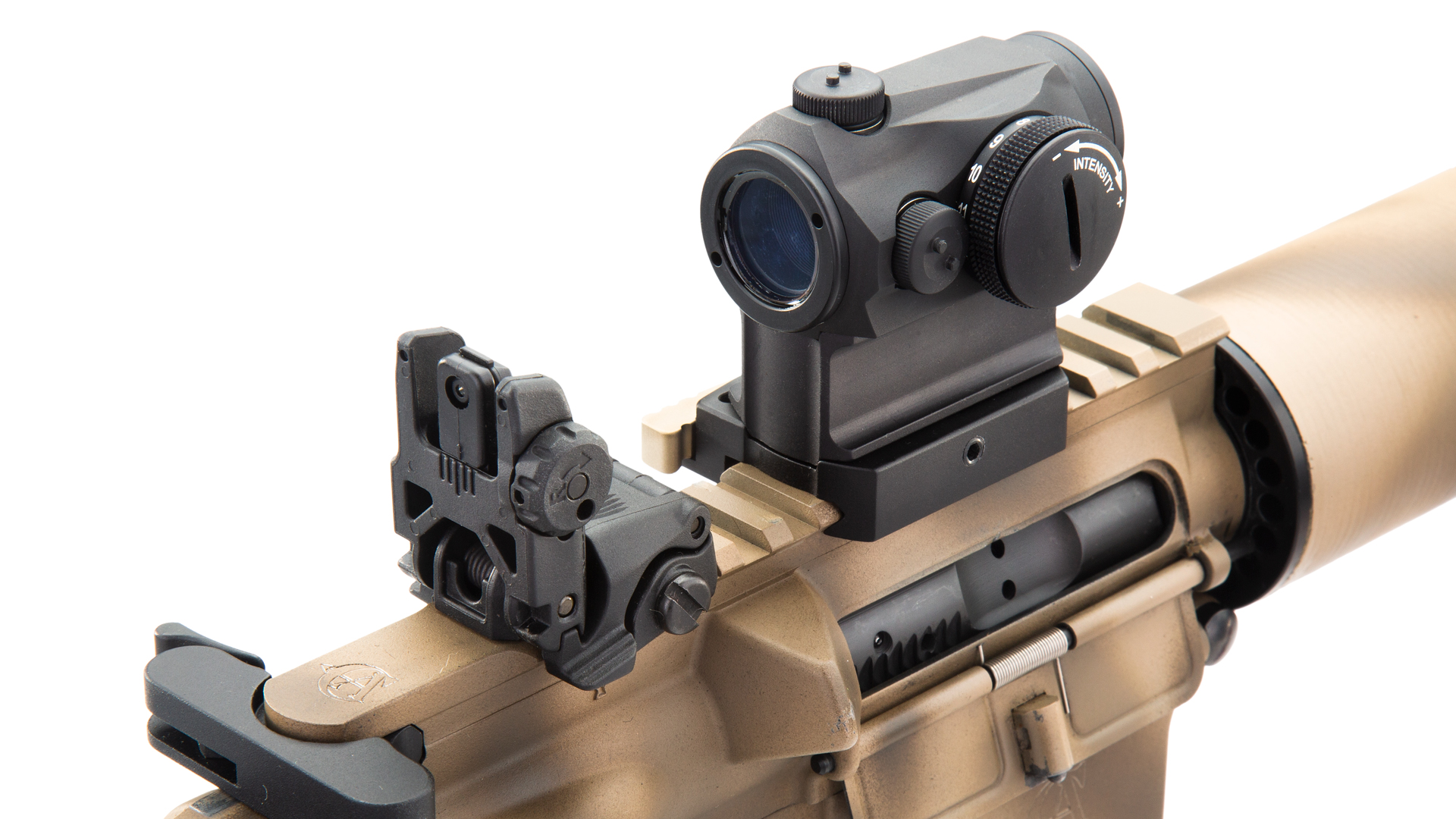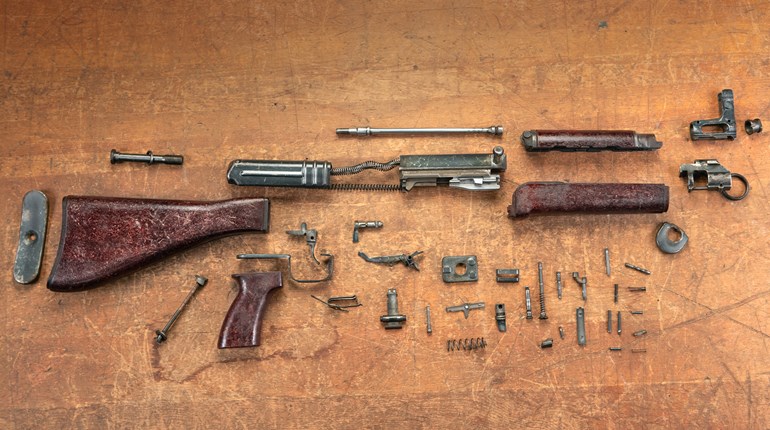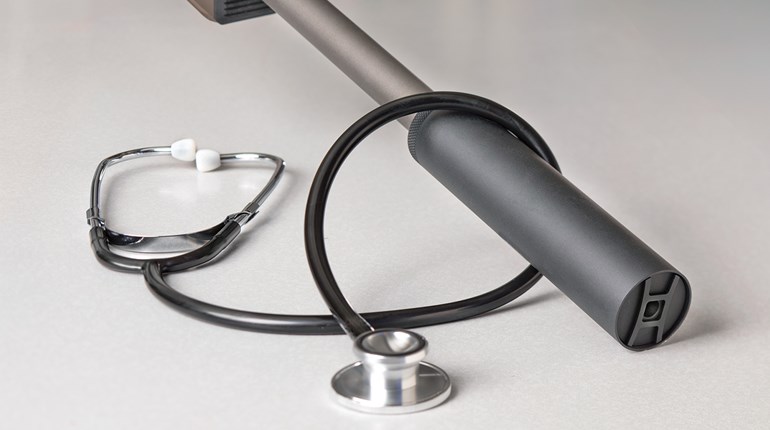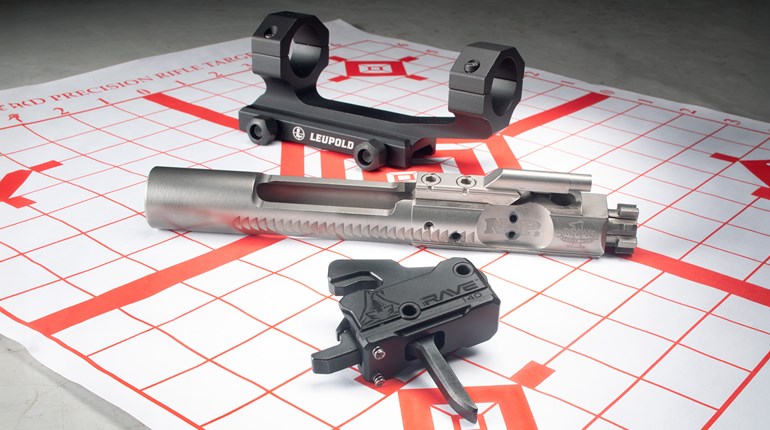
Backup sights that co-witness with an optic give extra peace of mind on a carbine used for home- and self-defense, without adding significant cost, weight or bulk.
Backup sights come in many flavors these days. Material options mostly consist of steel, polymer and alloy, while positioning can be inline, offset or piggybacked on optics. Designs may be fixed, folding or levitating. OK, no current options actually levitate, but you get the point: We have many designs from which to choose for alternate rifle sights.
When I wrote about backup options in our September 2013 issue, the field was full of bulky and sometimes clumsy attempts at modernizing the rifle shooter’s open-sight system. Things are better today, and while the 2013 overview is still applicable, some further sight considerations may prove helpful if you are in the market for a new set.
Fixed sights are still an excellent option when used alone or when co-witnessed with a non-magnified optic, but when it comes to backups, models that fold flat along a rifle’s top rail are far more popular. This is due mainly to the fact they can be stowed out of the way until needed. Oftentimes, backup sights have locking devices on either end of their travel. They may have a button or release that allows them to be quickly raised (Magpul MBUS, Ruger Rapid Deploy, AT3 Tactical Spring-Assisted) or to fold back down (Midwest Industries MCTAR, Troy Battlesights). Others do not lock at all, such as Magpul’s MBUS Pro series and Midwest Industries’ Combat Rifle Sights.
Sights that deploy with the press of a button typically spring into position very quickly. Conversely, those that lock when deployed for use are slower to raise but resistant to accidental folding when bumped or dragged through heavy brush. The latter types also have the advantage of being able to withstand the heaviest recoiling guns, which can cause some of the weaker, non-locking sight designs to fold unintentionally.
An increase of polymer and trimmed-down alloy options is probably the most noticeable change in the backup-sight market in recent years. When polymer sights first hit the market many years ago, most shooters—including me—were skeptical of their ability to hold up to abuse. I have installed and used many hundreds of sets of polymers since then, and I cannot recall a single instance where either a front or rear folder failed. I am sure it happens, but I am guessing it is a rare occurrence. Among the different types of polymer front sights I have used, the posts have all been made from some type of metal. Rear apertures can be metal or polymer, with all front and rear models I have seen using metal hardware for mounting-rail attachment. Even with such a solid track record, I still cannot bring myself to recommend polymer backups as the sole sighting system on a rifle used for anything serious, like personal defense or as a duty carbine.
Aside from greater weight and cost, most of the steel backups I have tested have been trouble-free. The exceptions have been when crossbolt screws used to tighten them to a rifle’s rail are over-tightened. Because steel sight bodies have no “give” through compression, screws can be snapped fairly easily if manufacturer-recommended torques are exceeded. Do not overtighten them. When possible, I opt for aluminum backups that tread a neat line between the strength of steel and the weight of polymer. The downside is alloy sights tend to be a little more expensive. Still, if you are buying a single set, the investment is worth making to know they will be sturdy without adding unwanted ounces.
Backup-sight adjustments range from designs reflecting the mastery of an ergonomic genius to those which even a medieval torturer would find too cruel for regular use. One of my favorite backup designs, Magpul’s MBUS Pro, has windage and elevation controls that would make a cheese grater blush. Their tiny, sprocket-like knobs are particularly stiff in cold temperatures. If you find yourself with similarly difficult knobs and have tools on-hand, a set of pliers and a small piece of bicycle inner tube or leather [to protect the knobs] will make the job much easier. Fortunately, we can typically zero our backup sights and forget about the adjustments until the next re-zeroing session.
Front-sight elevation adjustments tend to either be the same as or similar to standard M16/AR-15 front sights. Companies like KNS Precision, Blitzkrieg Components and XS Sights offer replacement front posts that provide all sorts of enhancements over the standard, thick posts common in mil-spec sights. Whether you want a fine point for aiming, a large dot, a colored chevron or a tritium-tipped post, good options are on the table.
Most “tactical” rear backup sights follow some form of the old dual-aperture model, where a large window enhances rapid target acquisition and a smaller opening is available for precise aiming. Aftermarket rear inserts are available for some mainstream sights, but options are fairly limited here. The CSAT rear-sight blade is a great design, ingeniously providing both long-range aperture and a short-range notch on the same blade, as well as an additional close-range aperture the shooter can flip to. For precision-minded iron sighters, micrometer rear-peep sights are available for a wide variety of rifles.
When shopping for flip-up sights for a rifle that will have a riflescope attached, ensure that the rear sight’s folded height will not prevent mounting a long optic. For example, at .51 inch above the rail when folded, Magpul’s MBUS rear sight is too tall for many standard-height, one-piece scope mounts. Conversely, its MBUS Pro model fits neatly under most anything at just .37 inch high.
Some of the options mentioned above also exist for fixed-sight rifles that lack a top rail. Blitzkrieg, XS, KNS, Meprolight, Kensight Manufacturing, HIVIZ, Williams Gun Sight Company and Skinner Sights have options for various rifles. Springfield M1As, Ruger Mini-14s, AK- and SKS-pattern rifles, Mauser 98s, Marlin 336s, Winchester 94s, HK’s legacy platforms and many others are on the table for open-sight enhancements. Should you need a better-than-stock set of backup sights for a rifle, there is a good chance you can find an effective aftermarket solution to meet your needs.




































